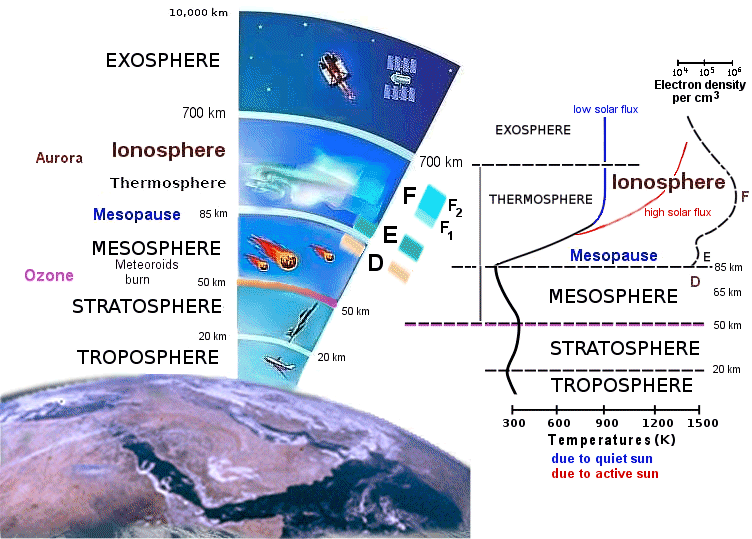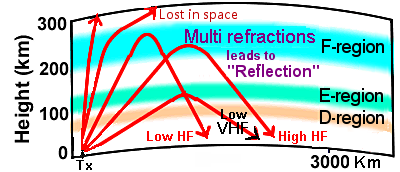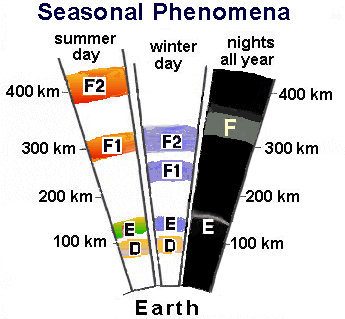
 How do the seasons affect HF radio propagation? ↗
How do the seasons affect HF radio propagation? ↗
Seasonal variations in the Earth's ionosphere can have a significant impact on HF radio propagation.
The ionosphere is a layer of the Earth's atmosphere that includes charged particles and is critical for high-frequency radio propagation.
The ionosphere refracts HF signals back to Earth, enabling long-distance communication.
During different seasons, the ionosphere behaves differently, affecting HF propagation.
- Summer: During the summer the sun shines for more hours and at a higher angle. Therefore, the ionosphere is higher and denser (having more free electrons). This can result in better HF propagation during the day, especially on higher frequency bands.
- Winter: In winter, the ionosphere is lower and less dense.
This can lead to better nighttime propagation on lower frequency bands. - Spring and Fall: These transitional seasons exhibit intermediate behavior.
Overall, the ionosphere is often more ionized during the summer, allowing it to more efficiently refract HF radio transmissions. As a result, radio waves can travel farther in the summer. In winter, however, the ionosphere is less ionized, due to the decrease in sunlight hours, making it less effective at transmitting HF radio signals.
Read more about seasonal variations of ionospheric regions.
shows near-real-time indices and explains what the terms mean.


